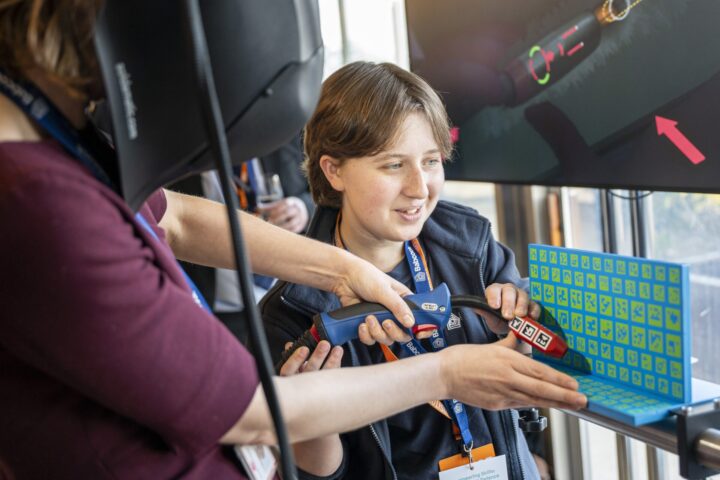The Adaptavist Group’s report found that artificial intelligence (AI) is making the gap between high and low earners, and between men and women, even wider at work.
Higher earners had much more access to AI tools and training.
Those with household incomes over £100,000 were more than twice as likely to have received over 20 hours of AI training (27% compared to 11% for those on £30,000 or less).
58% of high earners felt they’d had enough guidance on AI, compared to 25% of lower earners.
78% of people earning over £100,000 said they were regularly given new AI tools, while only 49% of those on less than £30,000 said the same.
50% of high earners said AI had significantly improved their job satisfaction, but only 14% of those on less than £30,000 agreed, with the average at 29%.
80% of high earners felt their skills were improving due to AI, compared to an average of 68% and just 49% of lower earners.
69% of high earners said they could prove the return on investment from AI, compared to 51% on average and 37% of lower earners.
Large companies offered more AI training than small businesses.
24% of small businesses had no AI training at all in the last year, and 56% had less than three hours.
Only 12% of large organisations had no training, while 64% had more than three hours.
Workers with over 20 hours of AI training a year were four times more likely to see AI as indispensable (29%) compared to those with an hour or less (7%).
47% of those with 20 plus hours of training said they saved at least 11 hours a week using AI, while only 7% of those with less than an hour of training saved that much time.
14% of those with over 20 hours’ training saved more than 30 hours a week, compared to 58% of people with less than an hour of training who saved under three hours.
Three-quarters (77%) of those with over 20 hours of training felt comfortable proving the ROI of their AI tools, compared to 16% of those with an hour or less.
53% of those with more than 20 hours of training said AI had significantly increased their job satisfaction, compared to just 8% of those with an hour or less.
A third (35%) of workers wanted more training but were afraid to ask for it.
The gender gap was also clear, with 45% of women receiving more than five hours of AI training in the last year, compared to 57% of men.
21% of women had less than an hour of training or none at all, compared to 14% of men.
51% of women had completed a formal AI training accreditation, while 61% of men had done so.
Women received less training than men at every level, with 58% of women in director roles receiving structured training from external providers, compared to 73% of men.
At intern level, 23% of women had external training compared to 47% of men.
Among administrative staff, 35% of women received external training, compared to 52% of men.
77% of women at C-level felt they’d had enough guidance on using AI at work, compared to 87% of men.
Among admin staff, 46% of women said they’d had enough guidance, compared to 57% of men.
72% of men believed their skills were developing because of AI, compared to 63% of women.
Jon Mort, chief technology officer at The Adaptavist Group, said: “The findings clearly show how access to training and tools enables professionals to unlock value with AI, while simultaneously increasing job satisfaction.
“With so much to be gained from properly implemented AI, it is critical that opportunity is not concentrated in the hands of the few.
“Organisations should take steps to ensure equal access to tools and training across the workforce.
“Without this, we risk deepening the very inequalities technology should help to solve.”
Mort added: “For instance, the advantages of AI also extend beyond the workplace. Our study uncovered that higher earners are significantly more likely to use AI both professionally and personally.
“While we didn’t explore personal usage patterns, AI’s potential to reduce unpaid labour burdens and support side hustles suggests that unequal access to AI training could deepen existing divides, particularly problematic in an economy that increasingly values AI proficiency.”
Susi O’Neill, AI consultant and founder of EVA, said: “Popular AI tools are built in the vision of Silicon Valley and best serve its demographics, leaving others behind.
“This critical research exposes how higher earners with more AI training extract more value, and explicitly shows the gender disparity in similar roles, with women facing reduced access and opportunities.
“As AI adoption accelerates, this creates a divide between AI ‘haves’ and ‘have-nots’ which will deepen inequality at work.”
O’Neill added: “This isn’t just about fairness, it’s about organisational survival. Companies that prioritise inclusive AI principles will outperform those that don’t.
“The choice is simple: give everyone AI access for exponential growth, or concentrate opportunity among the few and limit your potential.”
Aled Lloyd Owen, professor of enterprise and chief of staff for responsible AI UK, said: “Ensuring that the skills to successfully access the benefits of AI are available to the broadest possible cross section of society is an essential component to realising the enormous potential which AI systems bring.
“Equitable and inclusive approaches to AI implementation, including access to training and skills, is fundamental to a responsible approach to developing and deploying any AI system.
“AI has enormous potential to tackle inherent inequalities in our societies and to be a great leveller – but without ensuring the broadest possible access to its benefits, there exists a very real threat of entrenching and exacerbating those inequalities.”

















